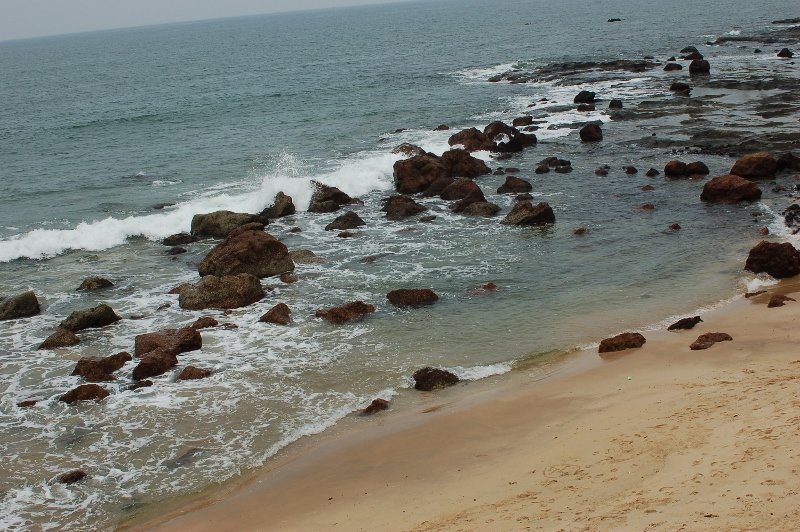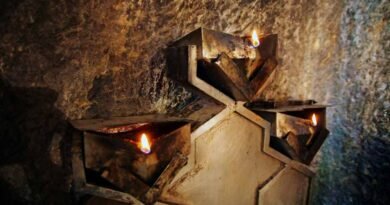The Welcome Shores Of Nargol – A History Of The Parsi Community In India
The Parsis may be a small community in terms of numbers, and it would have been quite easy for them to become invisible in this vast country of ours, but their accomplishments and sense of philanthropy has made them stand out. Here’s a look at how they landed in India, and managed to flourish while creating a deep respect and adoration in the hearts of Indians. Gangadharan Menon has interacted with his several Parsi friends and traveled to their historically important sites to recreate their history in words and photographs.

By the end of the 7th century, the mighty Sassanian Empire had been vanquished by Arab invaders. Many people of the Zoroastrian faith were consequently killed. Those who survived fled to the mountains of Iran. They were hounded out from there too, and after a brief respite in the town of Hormuz, they set sail for the friendly shores of India.
The ship that carried them was soon enveloped in a massive storm. The ship was rocked but not their faith. They prayed till the storm passed. And suddenly they discovered that they were washed ashore on the welcome shores of Nargol in Gujarat.
Legend has it that their leader, a Dastur, or a Parsi Priest, led his people to the durbar of the king of Sanjan named Jadhav Rana. When the Dastur requested permission for his people to settle down in Sanjan, the king asked for an empty vessel and some milk. Then, in full view of all those present, poured the milk into the vessel till it was full to the brim. And gave it to the Dastur, as if to mean that there is no place in the kingdom to accommodate Dastur’s people. The Dastur took the vessel of milk in his hand, sprinkled sugar into it, gave it back to the king, and smiled. The vessel didn’t spill over but had become sweeter! The king was so impressed with this brilliant metaphor that he gave them permission to settle down in Sanjan. And thus began one of the greatest integrations of two communities ever witnessed in the world.

At Nargol, where the Parsis first landed, I found a cluster of white-washed walls enclosing beautiful heritage houses, mostly manned by caretakers. After a lazy walk along its sleepy lanes, I found four kilometres of virgin beach with endless casuarinas whispering the tales of bygone era. And as I left my footprints on the white sands, I realized this beach is almost unaware of its own existence.
A few years after settling down in Sanjan, the Parsis requested the king to allow them to build a Fire Temple. The Sacred Fire, according to their religion, is the Son of Ahura Mazda, or the Eternal Light. And this Fire is made out of 16 fires. 15 of them come from earthly sources like a brick-maker’s kiln, a goldsmith’s fire, a baker’s oven, a shepherd’s house, a crematorium, a king’s house etc. The 16th fire is from a fire caused by lightning that comes from the heaven. The consecrated fire then occupies pride of place in the sanctum sanctorum of a Fire Temple. It took three years to purify this fire, and after it was placed in the Sanjan temple, it burned bright for 669 years, till the Mughals under Sultan Mahmud attacked Sanjan in the 13thcentury. The Parsis who had laid down their arms picked them up again. And 1400 valiant warriors under Ardeshir fought alongside the king’s army. The Mughals defeated them after a bitter battle. Fearing the kind of persecution which their forefathers had suffered at Arab hands, the Parsis fled to the mountains of Bahrot, 20 kms away. With the most valuable possession of them all: the Sacred Fire.
 The journey of the Sacred Fire shows the supreme will power and the sagacious nature of this community. It was hidden in the caves of Bahrot for 12 years, then taken to the jungles of Vansda for 14 years, then it remained safe in Navsari for 313 years, 3 years in Surat, back in Navsari for 5 years, then in Valsad for 1 year, till it reached Udvada in 1742. Here, at Ground Zero of Parsis the world over, this sublime fire has been burning bright for 270 years at the Fire Temple of Iranshah Atash Behram.
The journey of the Sacred Fire shows the supreme will power and the sagacious nature of this community. It was hidden in the caves of Bahrot for 12 years, then taken to the jungles of Vansda for 14 years, then it remained safe in Navsari for 313 years, 3 years in Surat, back in Navsari for 5 years, then in Valsad for 1 year, till it reached Udvada in 1742. Here, at Ground Zero of Parsis the world over, this sublime fire has been burning bright for 270 years at the Fire Temple of Iranshah Atash Behram.
Though they number just 60,000 in a population of 1.2 billion, some of the finest Indians have come from this miniscule community: lawyers and jurists, doctors, army officers, writers, and industrialists. Philanthropy runs in their veins and the greatest charitable trusts are run by them. And they not only take care of their elderly, but have built their Old Homes in the finest of locations in and around Mumbai: Matheran, Lonavla and Mahabaleshwar. And of all communities, they have the deepest concern about preserving nature and wildlife.

At Sanjan, there is no trace of the original Fire Temple, nor are there any quaint Parsi houses. There is only a commemorative pillar that was built a century ago, to mark the place of arrival of the Parsis in India.
Drive along the sea from Udvada and you will reach the twin beaches of Bordi and Gholvad. Known as the chikoo bowl of Maharashtra, they offer some fine Parsi cuisine too. Gool Khush is the pick of the Parsi restaurants offering you the best of class. Walk as much as you can on the deserted beach that stretches all of 17 kms, yes 17 kms! And once you have worked up a large appetite, feast on lagan-nu-bhonu, sali boti, dhansak , kheema-pao, dal-pulao, patra-ni-machchi, and top it all up with caramel custard. Or if you prefer, walk along the patchwork of light and shade in a shaded chikoo orchard nearby, and take a deep breath. The aroma of toffee you get comes from the resin of the chikoo trees, and can serve as an apt dessert.

Close by is the picturesque Asavli Dam, built painstakingly by hand, stone upon stone, much like how the pyramids were made. The dam has a mosaic of paddy fields on one side and the tranquil blue waters on the other side, encircling the yonder mountains like water snakes. Up among those hills of Bharda are the Bahrot Caves where the Parsis kept their holy fire safe and burning for 12 long years.
Yes, the Parsis have survived against many odds and have done wonderfully well in the land that adopted them. They have indeed been the sugar that for centuries has sweetened the flavour of the Indian ethos.

It is believed that Prophet Zarathusthra, unlike other mortal kids, laughed when he was born. Probably, looking at the way the Parsis have integrated so well into this country, he would be smiling now.
All Photographs by Gangadharan Menon





